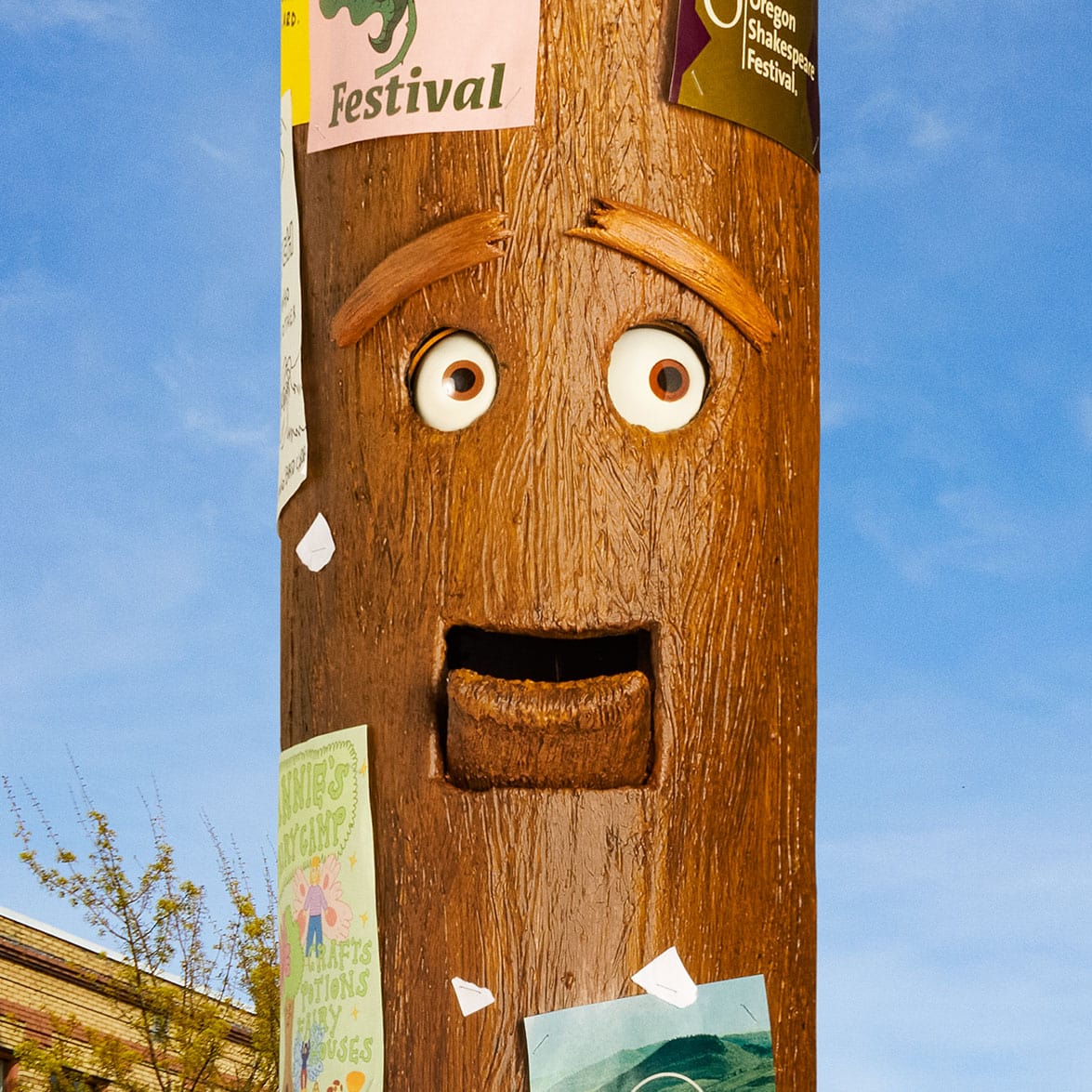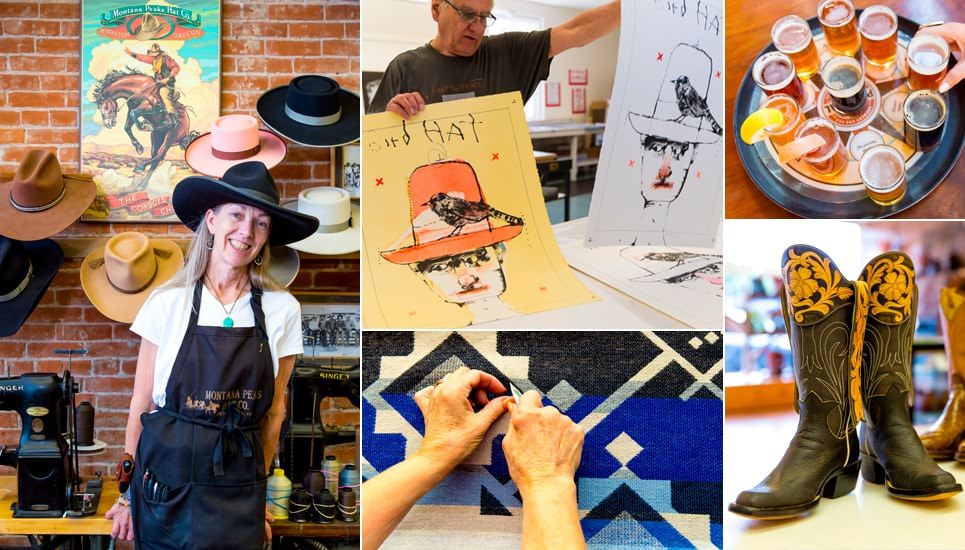
Few places in America conjure visions of genuine Western tradition like Pendleton. You’d be hard-pressed to find a town that so naturally blends charm, bare-fisted grit and ambition.
Here you can immerse yourself in Oregon’s frontier heritage: Half-stumble through a tour of the subterranean tunnels, where Chinese railroad laborers once descended to escape cultural exclusion. Lean over the quarter-sawn woodwork and 100-year-old mahogany bar of Hamley Saloon, or eyeball the long list of names posted downtown on the roster of the Happy Canyon Hall of Fame. And remember that when this town went and threw a party, it lassoed a world-famous rodeo.
Surely, most everyone knows about the Pendleton Round-Up, which draws thousands to the city during the second week of September. But fewer people know about the legions of industrious craftspeople residing here year-round.
The craft scene impresses with the unpretentious feel of necessity. As they’ll likely point, Pendleton’s makers have been hard at work at this kind of artisanship since long before it became trendy. And you can’t really understand the pioneering spirit of this town without spending a couple days touring the woolen mills, chatting with a saddlemaker and sizing your head for a custom felt hat.
On your road trip to the wide-open land of Eastern Oregon, pop into the studios or storefronts of these makers to get the behind-the-scenes look at Pendleton’s handmade renaissance.
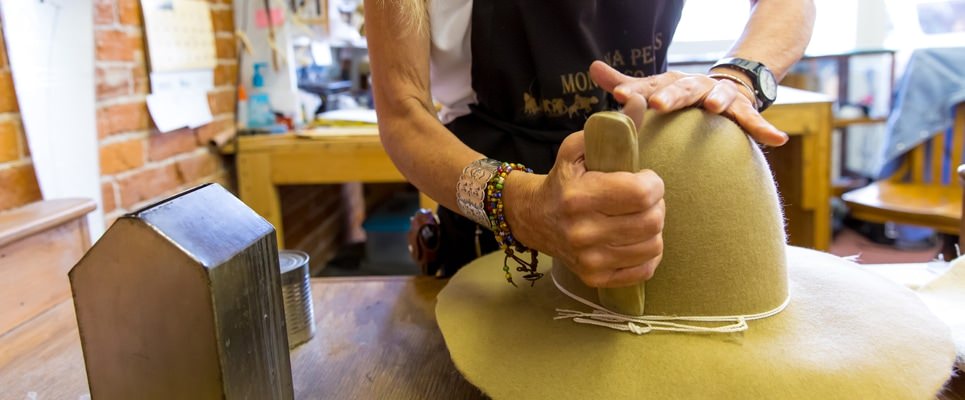
Size your head for a custom hat
Montana Peaks Hat Co., a fixture on Court Avenue in downtown Pendleton for the last eight years, is one of less than 100 remaining independent hatmakers in the United States. When you step inside, you’ll be fortunate enough to meet Laura Wortman and partner Richard Blackburn. And if you’re lucky, they may tell you the history of the Stetson — the very first cowboy hat — or clue you in on some of the secrets of their craft.
Known throughout the world for their work, their hats regularly make appearances on stage and in Hollywood films. The tools they rely upon tend toward the authentic and old. For precise fit, they use an 1890s piece of equipment known as a conformateur, which you must place atop your scalp to align its round assortment of pins and take a caricature of your head. This strange tool is a necessity, for two heads that share the same circumference can possess entirely different shapes. These hatmakers also use a formillion, an 1887 sewing machine, a crown iron and an 1880s sweatband machine.
Hats may no longer indicate the area of the country a cowboy hails from, but they’re still an extension of personality. And personality hangs all over the walls of this shop. You might see Wortman and Blackburn working on a popular Cole Thornton-style hat or any one style from the long list they make. Each hat represents about 10 to 12 hours of work spread over five to seven days, and they’re often backed-up with orders for several months.
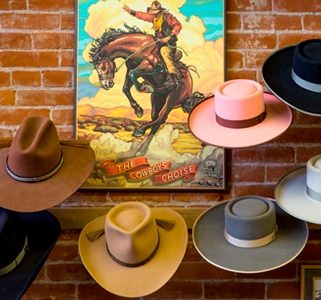
“Hats used to reflect the area of the country a cowboy was from. They’re still an extension of personality. No two hats at Montana Peaks are exactly the same.”
– Laura Wortman
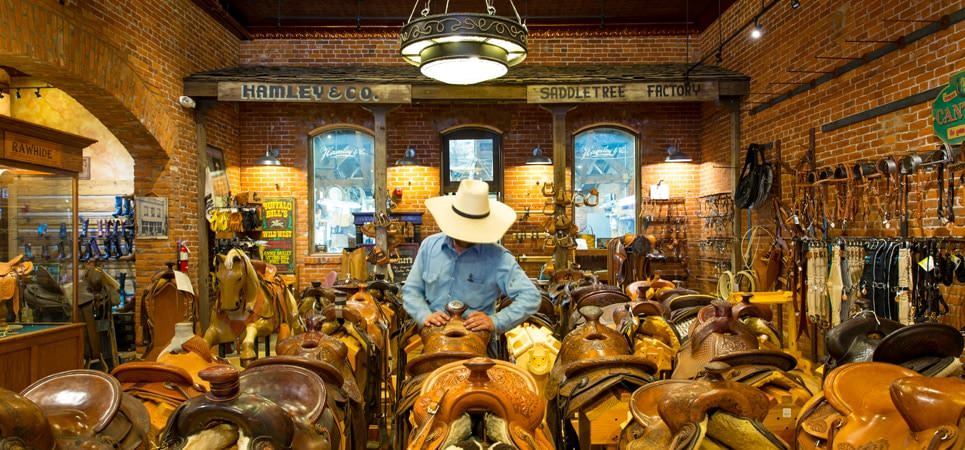
Get Round-Up-ready boots and saddles
Aside from a trusty, well-trained horse, there are two things every cowboy and cowgirl in Pendleton needs: a sturdy pair of leather boots and the kind of saddle a rodeo champion would ride. You’ll find Round-Up-ready gear at Hamley & Co. and Staplemans Boots & Leather.
Saddle makers at Hamley & Co. have been doing a stalwart, bristling business since 1883, when brothers J.J. and Richard Hamley set off from Wisconsin for South Dakota with two railroad tickets and 10 bucks between them. In 1905 the Hamley brothers set up shop along the Oregon Trail in Pendleton — the precise spot you’ll find Hamley today.
Hamley & Co. has since crafted some 80 champion saddles for the Pendleton Round-Up. J.J. himself helped supply Hoot Gibson, cowboy film star, as he saddled up and won in 1912. Hamley has become a source not only for the “best saddles a man can ride” but also for Western tack — from vintage batwing chaps to silver spurs. More than this, Hamley has evolved into a Western showplace, complete with tin ceilings, coffered woodwork and balconies lit by a Tiffany-style chandelier called the Dragonfly.
The founder of Staplemans Boots & Leather, Richard Stapleman, crafts his boots one at a time — every one by hand — with a level of artisanship you won’t find many other places on the West Coast. This shop is far from what most folks are accustomed to: It’s a store that asks you to make a wish, then gets right at designing boots and shoes that may just last your lifetime. Each pair of boots is custom fit to your feet and styled by Stapleman himself — a process that continues daily, with directions from the customer. It shows in every stitch.
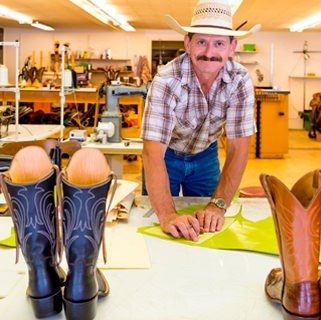
“Pendleton is moving beyond disposable attitudes toward a handcrafted economy. The reason we have so much success here is that the town really gets behind us.”
– Richard Stapleman
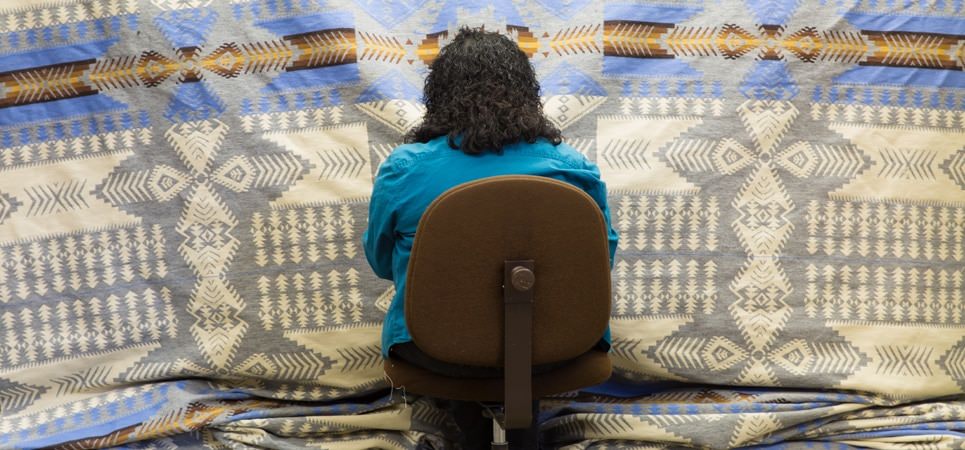
Tour the Pendleton Woolen Mills
Anyone can embark upon a free, half-hour tour (offered Monday through Friday) of Pendleton’s Woolen Mills, provided you arrive at the right time and stand in line beside the yellow bench.
Tour-goers first get to walk wide-eyed through a showroom piled high and splashed with brightly colored blankets and shirts bearing unmistakable Pendleton plaids and blocked designs. Among other striking sights, you’ll see one of Oregon’s most successful and long-lived companies spin into genuine motion, clicking and whirring in a manner not unlike the old days. Three types of looms do their work in these back rooms, where scoured wool is untangled and churned into webs onto bobbins that hold 2 miles of yarn.
These mills provided blankets for the military during World War II, and they have a history reaching back more than 153 years. Joe Rawnsley, an entrepreneur and loom master here in the mill’s infancy, spent six months traveling the American Southwest, gathering hundreds of designs from native tribes. He then consulted the tribes of Northeastern Oregon to find regional appeal.
This tradition continues today. Want a sneak peek? Interested parties can see the legendary Lord of the Plains and Buffalo Creation Story blankets online — and even better, the Thunderbird and Whale Crib Blanket, one of a series of stunningly spun creations whose proceeds help send Native American students to college.
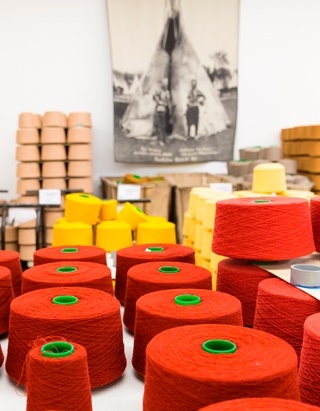
At Pendleton Woolen Mills you’ll see one of Oregon’s most successful and long-lived companies spin into genuine motion, clicking and whirring in a manner not unlike the old days.
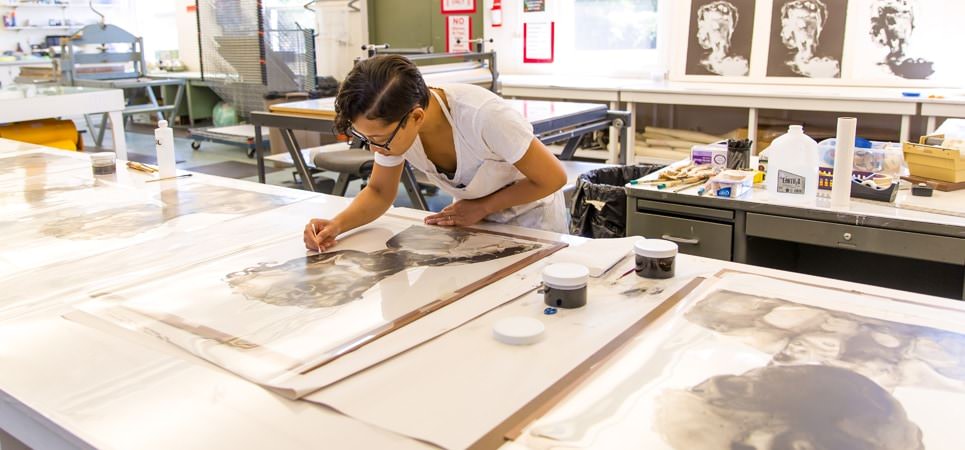
See contemporary Native American art
A short scenic drive from Pendleton, not far from the Tamástslikt Cultural Institute, you’ll find Crow’s Shadow Institute of the Arts. Here in the basement of an old schoolhouse on the Umatilla Reservation, executive director Karl Davis and master lithographer Frank Janzen undertake an unusual artistic enterprise: a remarkable collaboration between artist and community.
Crow’s Shadow Institute was the brainchild of painter James Lavadour and a coalition of other local artists. It’s been in operation since 1992 and is about to celebrate its 25th anniversary. This renovated schoolhouse, supported by a Ford Foundation grant, binds together the energy and resources of Janzen, the local community and visiting artists invited for residencies. Artists from distant tribes, such as Kay WalkingStick (Cherokee) and James Luna (Luiseño) have brought spirit to the institute and contributed energy. So have Umatilla artists like Susan Sheoships and Whitney Minthorn. The greater intent is to foster the development and success of Native American art. Part of this mission consists of Janzen and Crow’s Shadow Institute’s work teaching printmaking to students from nearby Nixya’awii Community School.
These young artists’ works may be purchased, and the proceeds fund student pursuits, as well as the institute. Davis aptly writes in an article about the history of the institute: “This world-class print studio in the middle of a wheat field, under the aegis of art…brings the world to the reservation and the reservation to the world.”
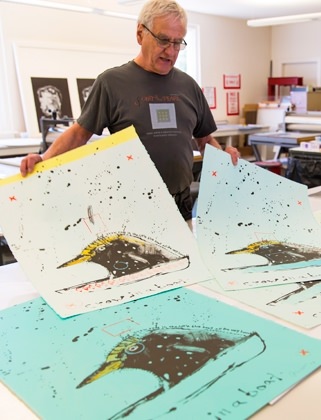
“Crow’s Shadow is both an idyllic retreat and center for intense focus. It’s a creatively fertile space that encourages daydreaming, and in my opinion that is an essential ingredient for an artist.”
– Samatha Wall, artist-in-residence
